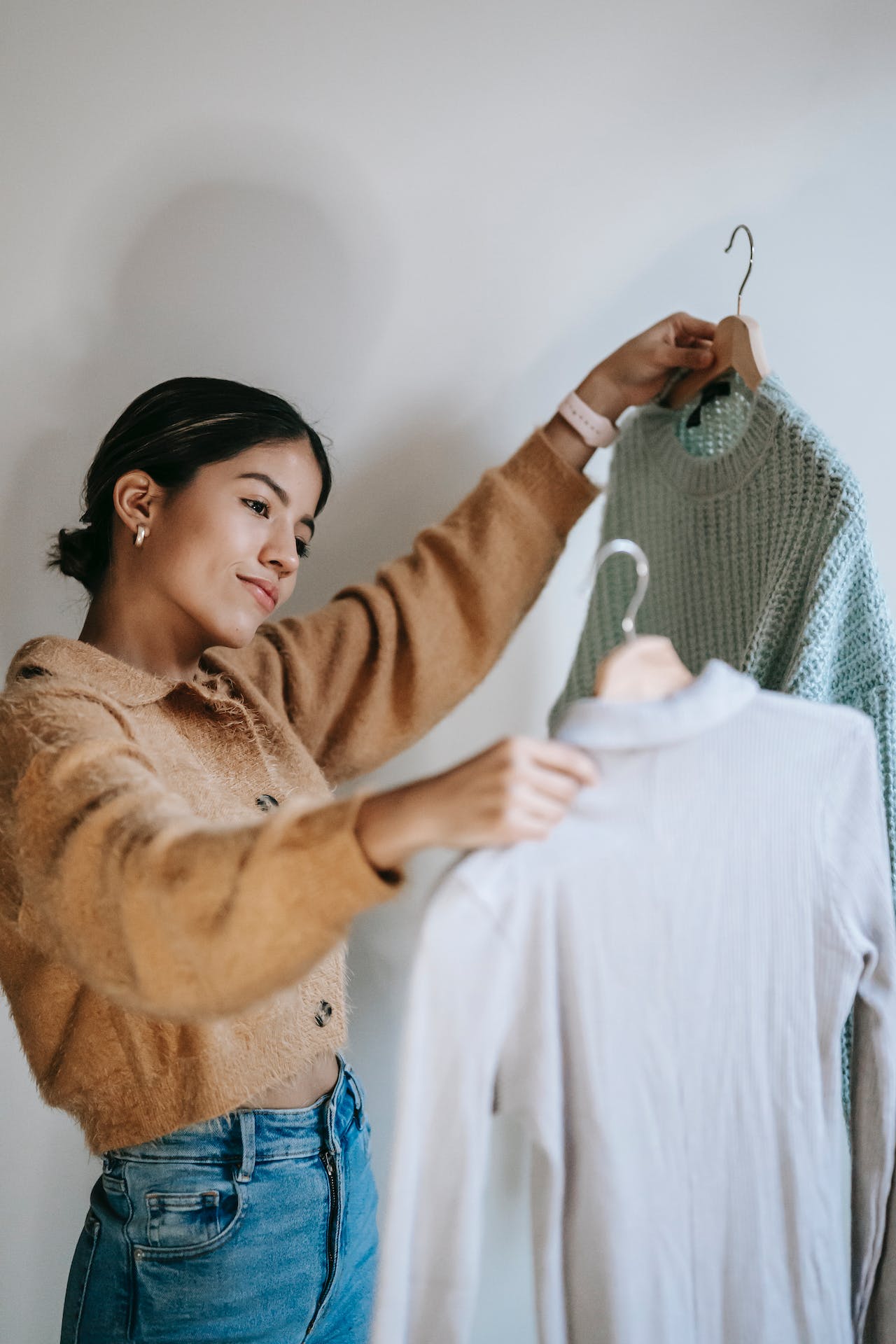‘Digitising’ your wardrobe can help you save money and make sustainable fashion choices

You note the price, brand and category of your garments (and shoes and bags) and then record how much use they get. (Pexels Photo)
Spring is traditionally the season for a good clean – and maybe a clear out. Taking stock and having a bit of a declutter can freshen things up domestically.
One popular new way of doing this involves targeting your wardrobe by making digital inventories of your clothes – and then tracking what you wear. You note the price, brand and category of your garments (and shoes and bags) and then record how much use they get.
The idea is that having this information can then lead to better choices in the future, whether that’s saving money or having a more sustainable approach to fashion.
And better choices are needed. The clothing industry in Europe is ranked fourth in terms of its detrimental environmental impact after housing, transport and food.
Clothing is heavily underused, with the number of times a garment gets worn reportedly decreasing by 36% globally between 2000 and 2015. In the UK it has been estimated that 65% of women and 44% of men have clothing in their wardrobe which they are yet to wear, while one survey found that many women consider garments worn once or twice to be “old”.

This article is part of Quarter Life, a series about issues affecting those of us in our twenties and thirties. From the challenges of beginning a career and taking care of our mental health, to the excitement of starting a family, adopting a pet or just making friends as an adult. The articles in this series explore the questions and bring answers as we navigate this turbulent period of life.
You may be interested in:
Why a social media detox may not be as good for you as you think – new research
Four ways men and women can improve their health before trying to conceive
Expert advice to help young people keep their new year resolutions
So while brands compete with online services to offer ever increasing amounts of clothing to consume, amid popular tools to sell the clothes you no longer need, we wondered whether digital tracking could make your wardrobe more sustainable.
For our research, we worked with Save Your Wardrobe, an app designed to help people organise and categorise their clothes. We interviewed users to find out if digitising their wardrobes led to any noticeable changes.
From the start, we found consumers feeling anxious and dissatisfied with their clothing behaviours and wardrobe management. There was an aspiration to better understand what was in their wardrobes and how they used their garments.
One woman told us: “Personally I would feel happier if I felt like I was making really thoughtful decisions [about what clothes I buy] and they weren’t coming from a place of anxiety, or a place of feeling constantly like there is some new gap in my wardrobe that I have to fill.”
Another said: “I think a lot about reducing the eco footprint of my lifestyle. And I think clothing is one area where I get frustrated because I don’t feel like my values line up with my behaviour.”
She added: “I feel like we should just consume less, but then I can get anxious and stressed out and feel like I need something, and those two things are incompatible.”
Make do and mend
For many, the initial process of organisation required to upload photos of garments to the app became a moment of reflection and an opportunity to challenge and change existing patterns of behaviour. The effort involved also resulted in a sense of appreciation of the clothing which was already owned.
An important aspect of this was the ability to quantify what was in the wardrobe – and many of the people we spoke to were surprised (or even shocked) by the amount of clothing they possessed.
One said: “I realised that 50% of my wardrobe is from Primark. It’s ridiculous and I was like, ‘Oh my god!’”
She continued: “I knew that when I go to Primark I go crazy but I didn’t have a full overview of all the things I have.”
Another commented: “I definitely felt more organised. Revisiting old clothes made me see what I have in my closet. That was good, because I [had been] wanting to buy something new, but realised I don’t need to.”
This kind of reaction was common, as users of the app came to understand – and seek to change – their patterns of behaviour around clothing. Items were rediscovered and brought back into use in a way that made owners feel they were “shopping from their own wardrobes”.
As they realised how much money they had spent on clothes, some pieces were put aside for repair so they could be worn again, while others were given away.
Overall, we found that consumption of clothing is fuelling consumer anxiety – but that using an app can help people feel more in control of their wardrobes. Tracking data about their behaviour gave consumers a sense of being more in control of their actions and where they could make changes.
The chance to quantify and gain insight in this way was viewed as similar to other digital solutions – like wearable fitness trackers that record data and can provide motivational encouragement.
Being more aware of the clothes they already owned made a difference to people’s appetites for owning more. So, with a climate change crisis, and when incomes are being squeezed by the cost of living, perhaps it’s time to ditch the shopping apps – and spend some time becoming reacquainted with the clothes you already own.![]()
Deirdre Shaw, Professor Marketing and Consumer Research, University of Glasgow and Katherine Duffy, Senior Lecturer in Marketing, University of Glasgow
This article is republished from The Conversation under a Creative Commons license. Read the original article.





















